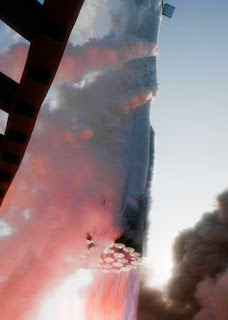On April 20th, Starship orbital test took place. Almost 2 years of waiting has come to an end. The rocket did not reach most of the predicted goals and had many problems. But it could have been much worse.In the last 40 seconds of the countdown, the stopwatch is stopped. Just as I was wondering if there would be a delay again, the counting started again. We witnessed that the Super Heavy Booster, which was covered with ice, was caught between flame and dust clouds.It was known that although the engines would run for about 6 seconds, the rocket would be held in place and then released if all was well. But in that confusion, this duration seemed much longer.Then Starship started to rise slowly. On the one hand, it was rising, but at the same time, it was as if pulling to the right. Was something wrong or was this a planned maneuver to get away from the launch tower?In the seconds that followed, the rocket's speed increased. As it rose like a spear in the sky, explosions from engines and hydraulic systems were seen at its base.When it was time for the separation of the second stage, the rocket began to spin. At an altitude of about 39 km, it did some desperate somersaults around itself. Eventually the flight termination system kicked in and the rocket was detonated.Faced with a rocket of this size, those familiar with the work are inevitably frightened. There are millions of things that can go wrong, and if the test gets out of control, there may be loss of life as well as physical damage.At this point, the only thing SpaceX wanted was to get rid of this rocket. They even changed many of the technologies they used here in later prototypes. Leaving the tower behind and not exploding on launch pad was the only criterion for success.
Starship was by far the heaviest human-made object that could fly under its own power. Try to imagine the downward force required for such a mass to rise and the reaction of the ground to it.Normally, methods are used to dissipate and suppress the heat and mechanical energy applied by rockets to the ground. Like the flame divertor and the flood suppression system. Starship ground elements did not have these.
With the pressure of the engines, a large crater formed in the concrete under the launch pedestal. The blown pieces inflicted serious damage up to hundreds of meters away. Engine and hydraulic problems may be caused by the destructive effect of these parts or the sound waves reflected from the ground.
As a result, the fate of this ground system and the experiment with this rocket was drawn from the beginning. It would be delusional to expect a perfect result. Still, luck was on SpaceX's side, there was no disaster. I believe Starship will solve the issues in a few years.












Comments
Post a Comment